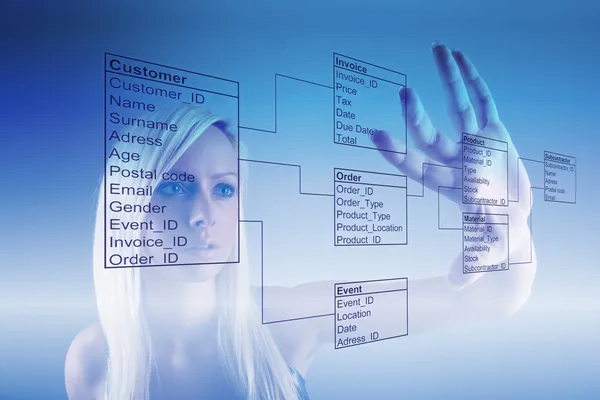2022 shaped up to be an extremely prosperous and important year for AICA. In addition to forming strategic partnerships, new technologies and algorithms were developed to further perfect AICA’s product cleansing tools. As a result, AICA’s tools are now able to process larger quantities of data and a wider variety of data types than ever before, giving them a further edge in the data cleansing industry.
Product data enrichment will be an area where AICA strives to improve in the year of 2023, expanding into areas within data enrichment that very few tools have been able to achieve.
In the following article, we will outline how AICA’s enrichment algorithms will advance as well as how your organisation can benefit from this new technology.
Product Data Enrichment
Product data enrichment is a process that helps retailers and manufacturers make their products more relevant to the customers who want them. It’s like an additional layer of information that can be used to help understand consumers, improve targeting and even help with pricing.
For example, if you have an existing catalogue with information about all the products in your company’s lineup, and you want to add information about new products, such as the names of their components and/or accessories, this might be possible if the new product is actually made by the same manufacturer as one of your current products.
In some cases, it may be possible for more than one product line to share some of the same data—for example, if you have both a laptop and a desktop computer in your lineup. In this case, you could use product data enrichment to add information about accessories for both lines at once.

What are the benefits of having enriched data?
-Improved customer experience
-Reduction in redundant stock
-Increased sales on products struggling to find ground
-Helps create meaningful customer relationships
-Reduction in costs
AICA has identified that most organisations don’t enrich their data and this may lead to untouched sales. To help optimise the algorithms to identify all data that needs to be enriched, AICA implemented supervised learning to increase the amount of data the algorithms can identify.
Supervised Learning
In order to create a tool that identifies and understands the products that need enrichment, AICA has inputted over 20 000 000 product attributes and taxonomies into their supervised learning programs which cover nearly every product type, in almost every industry.
What is supervised learning?
Supervised learning is a supervised model that uses a training set of labelled (Enriched) data to predict the labels of unlabeled(Un-enriched) data.
Supervised learning is done using a machine learning algorithm that has been trained with a set of labelled data. The algorithm can then be applied to an unlabeled dataset and predictions about the unlabeled data can be made. This process is repeated until no new data would be learned from when the algorithm was trained, at which point the model’s performance will stabilise and it will no longer improve over time.
With this incorporated into AICA’s tools, more specific product attributes can be identified on your products. Resulting in data that can almost guarantee your enrichment levels will be higher than that of your competitors.
Language Translation Models
In the product data, language translation models are important for businesses to make sure that everyone can understand their products and services. As a result, AICA plans on launching over 200 languages in their translation model in 2023.

Without language translation models, it would be hard for an international company to make sure that their products were understood by customers in different countries. If a product doesn’t have a language translation model, it might not be understood by the intended audience. This will not only make the business look unprofessional, it will also result in a reduced number of sales due to SEO issues.
Having translation models allows you to:
1. Target your audience based on their language preference, so that you don’t waste resources on a product that won’t sell.
2. Improve your marketing efforts by being able to identify the language preferences of your target audience and tailor your content accordingly.
Generative AI
Towards Q3 of 2023 AICA will introduce Generative AI into its enrichment arsenal. Generative AI is a branch of artificial intelligence that uses machine learning to create images, music, and other forms of data. In AICAs case, creating images from an input of a user. This will allow you to create product graphics that are standardised throughout your site. An additional benefit is that it works out to be 95% more cost effective, as there is no need to hire graphic designers or other professionals to make graphics.
Above is an example of how Generative AI works, a prompt is given then an image is generated.This has many possibilities! For example, imagine you were selling shoes. You could then get the AI to create images of the specific shoes in different locations or create 3D representations of those shoes.
This will save businesses large amounts of resources as there will be a decreased need for marketing expenses as the AI can just do it faster, better and at reduced costs!
In advertising and marketing campaigns, generative AI can predict the responses of a target group based on the available data. Furthermore, it can be used to enhance approaches to cross-selling and upselling through the generation of synthesised outbound marketing messages.
Here are some predictions based on Generative AI:
-Within the next few years, generative AI will produce 10% of all data and 20% of all test data for consumer-facing use cases.
-A majority of drug discovery and development initiatives will use generative AI by 2025.
-Generative AI will enhance product development effectiveness for 30 percent of manufacturers by 2027.
By leveraging this information, AICA wants to revolutionise the way Generative AI enhances product data by pioneering its implementation.
To Conclude, AICA looks forward to 2023, where it will be able to demonstrate and implement all the new developments, not only in the data enrichment space, but also in data comparison and data cleansing. We hope that you found this information interesting and informative.
